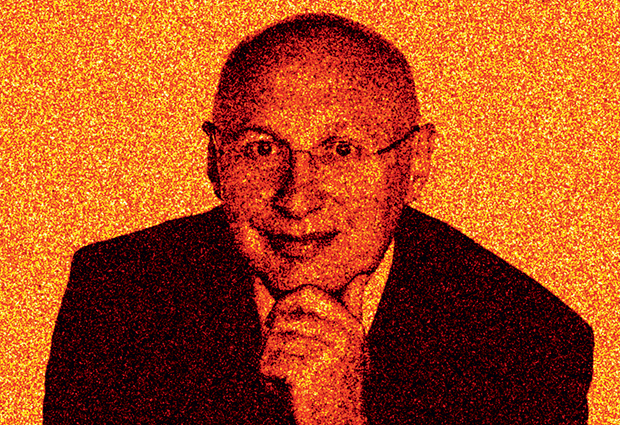
Read the latest Issue
In autumn 1993, Stefan Hell removed a book on quantum optics from a shelf in his living room in Turku, Finland. He was hot on the trail of a question that had been driving him for years – how to smash through the diffraction barrier identified by German physicist Ernst Abbe more than 100 years previously.

Hell set about exploring ways that focused not on light and optics but on the molecules themselves being studied. Browsing the book, he struck upon the words “stimulated emission”, and was stunned to read that molecules excited to fluoresce could be ‘turned off’ temporarily. It provided him with the lead he was looking for. Using chemistry to circumnavigate the laws of physics, he went on to develop stimulated emission depletion (STED) microscopy at the Max Planck Institute for Biophysical Chemistry in Göttingen, a technique that enables researchers to zoom in on the nano-world and watch life as it unfolds. Within a week of being awarded his Nobel Prize in Chemistry in October 2014, Hell visited EMBL Heidelberg, where he was a postdoc in the early 1990s.
I wondered whether there was still something profound that could be done with light microscopy, which seemed to me like 19th Century physics, and I saw that the diffraction barrier was the only important problem that was left. It was not feasible to break the barrier by changing the way light is focussed, so I started thinking about quantum optical effects or – more promisingly – the idea of playing with molecules and changing their molecular states. One approach I considered involved re-exciting fluorescent molecules from an excited state, to see if this could lead anywhere. Then, a book chapter on stimulated emission caught my attention. I immediately thought: why excite the molecules? Why not de-excite them and keep them in the dark? If I could find a way of turning off all but a nano-sized area of light emitted by a source, then it would be possible to get rid of the light that creates blurriness and thus enhance the resolution. This was the moment when it dawned on me that I had finally found a concrete thread to pursue this idea. What happened next was the most exciting time of my professional career – I sat there with the incredible feeling that I might know something that no one else in the world knows.
When I was at EMBL in the early 1990s, it was the unrecognised cradle of a revolution in light and electron microscopy
A strong impression had developed amongst the scientific community that Abbe’s barrier could not be broken – doing something against it was seen as kind of crazy, or unrealistic. Indeed, since its discovery, ideas had been repeatedly proposed to overcome it, but none had really succeeded and it was natural that there would be scepticism towards STED and related ideas. But I was convinced it would work as I could not find a basic flaw in my concept – basic problems will probably remain, but technical ones can be overcome. Still, there were many hurdles: support and funding was often in short supply – first the idea had to be proven in principle, then in practice – and even then, many doubted its broad applicability. But because I knew the idea was fundamentally correct, I held onto it and did not allow myself to be misled when people said it could not work.
Employ a healthy disregard for scientific paradigms. Institutions should support young researchers in pursuing unusual research topics and to take risks – the most exciting science happens when questions are asked in the context not of careers but of discovery. The work that earned me the Nobel Prize was about overwriting one paradigm, but there are undoubtedly many others out there waiting for someone to think about them in a different way.
When I was there in the early 1990s, EMBL was the unrecognised cradle of a revolution in light and electron microscopy. The Laboratory is open-minded, international, and quality-driven and places significant trust in young researchers. In many respects I began my scientific career here – at first I felt a bit alien as a physicist in a biology institute – but I very much enjoyed collaborations with biologists, chemists, medical scientists, and researchers from other disciplines. In the end, interdisciplinarity held the key to cracking the barrier. I would have loved to stay if it had been possible.
The work that earned me the Nobel Prize was about overwriting one paradigm, but there are undoubtedly many others out there waiting for someone to think about them in a different way.
The ability to see and image at the nanoscale is critical to further advances in nanoscience. Work today is opening up possibilities in a vast number of areas, including improved diagnostic tools, studying the impact of medicines directly within the cell, and deeper insights into the nature of disease. My own work is now largely focused on neurobiology. We are interested in how cells interact with each other in tissues, especially in the brain, and how memory works at a molecular level. I was fascinated by the idea of delving into an old question of physics that everyone thought had been answered once and for all – it was a matter of principle – and we have seen just the tip of the iceberg in terms of what we can learn. It is very exciting to think about where this may lead in the coming years.
Looking for past print editions of EMBLetc.? Browse our archive, going back 20 years.
EMBLetc. archive